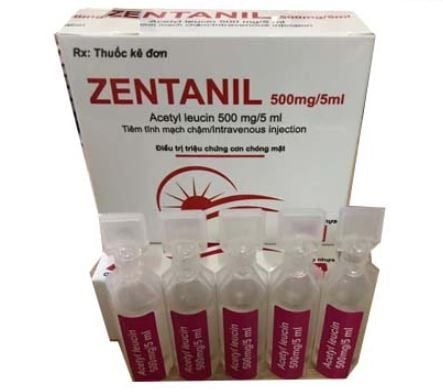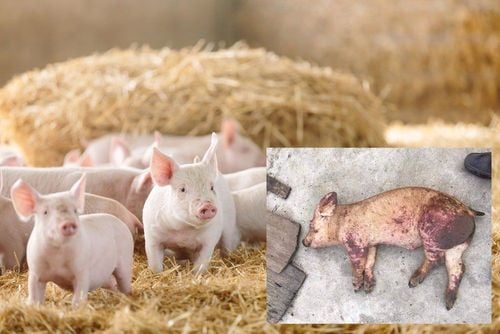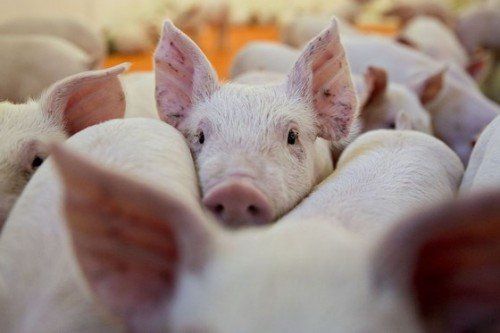This is an automatically translated article.
There is currently no vaccine for African swine fever. The virus that causes African swine fever can persist for a long time in the environment and in pork products. Therefore, it is necessary to actively prevent and control African swine fever in the current period and to perform well the management of pig herds to maintain and develop the livestock industry, effectively and sustainably.1. What is African swine fever?
This is a disease caused by a virus with complex DNA of the family Asfarviridae. This virus is particularly resistant to the environment with no treatment and no vaccine to date, and has a mortality rate of up to 100% in all pig farms. For this reason, the emergence of African swine fever leads to serious problems for health authorities and the pork industry.
African swine fever affects all types of pigs, of all breeds and ages. It occurs in pig farms and wild pigs such as: African wild boar, wild boar, African riparian pig, African wild boar, Central and South American boar.
2. Has African swine fever ended?
According to the report of the Ministry of Agriculture and Rural Development, the African swine fever epidemic has not yet ended and is having a complicated development, with a tendency to spread quickly, on a large scale, in large scale livestock production. and have better biosafety breeding conditions.As of the end of September this year, swine fever has occurred in over 7,700 communes in over 600 districts of 63 provinces and cities with a total of over 5 million pigs culled, total weight is over 290 thousand tons (accounting for about 7% of the country's total pork production in the year). In which, there are more than 4,500 communes where pigs have been sick for less than 30 days; More than 3,000 communes have passed 30 days and there are more than 500 communes with epidemic diseases that have passed 30 days, but sick pigs have arisen.
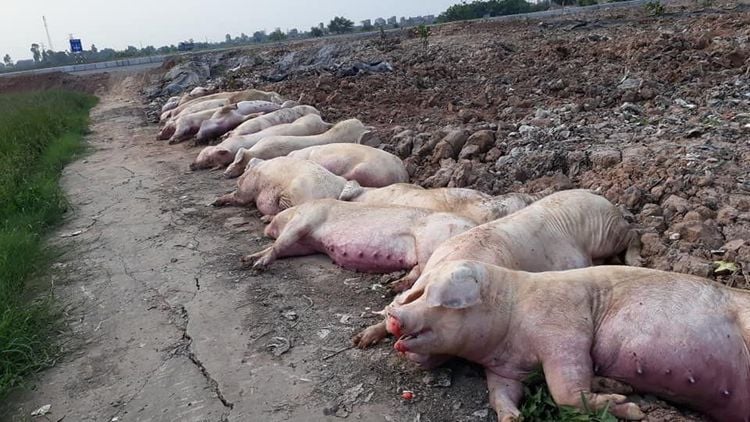
Dịch tả lợn Châu Phi hiện vẫn chưa chấm dứt và đang có diễn biến phức tạp
3 - 15 days is the incubation period of African cholera, characteristic symptoms such as bruising of the skin most of the body, widespread hemorrhagic inflammation of the gastrointestinal tract, lymph nodes and kidneys. High fever 41-42 degrees Celsius lasts 4 days in a normal state, then the pig becomes moody, lethargic, weak, coughs and breathes hard; tremors, unsteady gait, lying on top of each other, sows miscarriage. Occurrence of bruising and bleeding in the ears, groin, abdomen, and posterior thighs, legs, and then necrosis. Blood comes out from natural openings such as nose, mouth, and anus.
3. How to prevent the spread of disease
African swine fever is not a serious threat to humans as pork can be safely consumed when cooked. However, pigs infected with African cholera have a high risk of other diseases such as blue ear, flu, typhoid... These diseases will cause digestive disorders when people eat pig's blood soup, pork meat. undercooked disease.
There is currently no vaccine to prevent this disease in pigs. The virus that causes African swine fever can persist for a long time in the environment and in pork products. Therefore, in order to actively prevent African swine fever in the current period, and at the same time, perform well the management of pig herds in order to maintain and develop the livestock industry, effectively and sustainably. comply with the following requirements:
Regarding food safety:
People should eat cooked, drink boiled and choose to buy pork at establishments that meet food hygiene and safety conditions. Absolutely should not eat blood pudding or rare, raw meat, because although it is not contagious and dangerous to people, it should not be misunderstood that it can be used to process infected pork. When buying meat, it is necessary to pay attention to choose pieces of meat with bright pink color, soft skin, meaty texture and good elasticity. When pressed, do not leave sticky dents. In particular, fresh pork is red or dark red, the outer membrane of the meat is dry, but when cut with a knife, the color is normally bright. Do not choose pieces of meat that are low in fat, loose, and have a strange color change, and when pressed with your hands, the meat feels greasy. In particular, the meat must not have a rancid or antibiotic smell. When pigs have cholera, their resistance is reduced, so they are easy to catch other infectious diseases. To ensure safety, consumers should choose to buy at establishments that meet food hygiene and safety conditions.
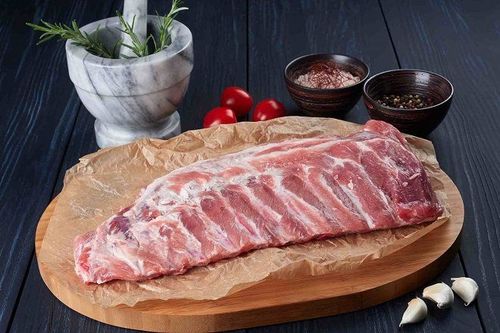
Khi mua thịt lợn, cần chọn lựa những miếng thịt tươi ngon có màu hồng sáng
Pigs imported for raising must have clear and healthy origins. For pigs imported from outside the province, a quarantine certificate is required. Before entering the herd, keep them isolated for at least 2 weeks. Do not donate or sell dead pigs to others and do not use sick pigs as food for animals; do not transport pigs or products derived from domestic pigs or wild boar (home-made products) in and out of epidemic areas; Do not bring pigs or pork products abroad, if you do, please declare or ask the authorities in advance to avoid fines. Regarding the sanitation of the barn:
Farms and livestock equipment must strictly control people and animals entering and leaving the breeding area; cages must be easy to implement measures of hygiene, sterilization and disease prevention; There should be nets around the cages and other measures to prevent insects and other vectors from transmitting diseases such as mice, birds, flies, mosquitoes.... At the entrance to the barn, it is necessary to arrange disinfection pits, change labor protection for people entering and exiting livestock production areas; have isolated cages to raise newly imported pigs or raise sick pigs; have waste collection and treatment areas; if possible, rearing by the method of spacing, each barn has a space of 0.8-1m to minimize the pigs between the cages coming into contact with each other. Do not share livestock equipment between cages; Sewage drainage from the barn to the waste treatment area must be sealed. Wastewater from any barn drains separately from that cage. In suspicious cases such as dead or alive pigs, it is necessary to report to the veterinary agency because the characteristic of the epidemic is not to die the whole herd, but to die slowly; Follow preventive measures, clean livestock areas and at markets as usual. Do not visit the pig breeding area, directly and indirectly contact the pigs in the epidemic and affected areas; Do not feed pigs unsanitary leftovers or foods containing meat.
Please dial HOTLINE for more information or register for an appointment HERE. Download MyVinmec app to make appointments faster and to manage your bookings easily.




